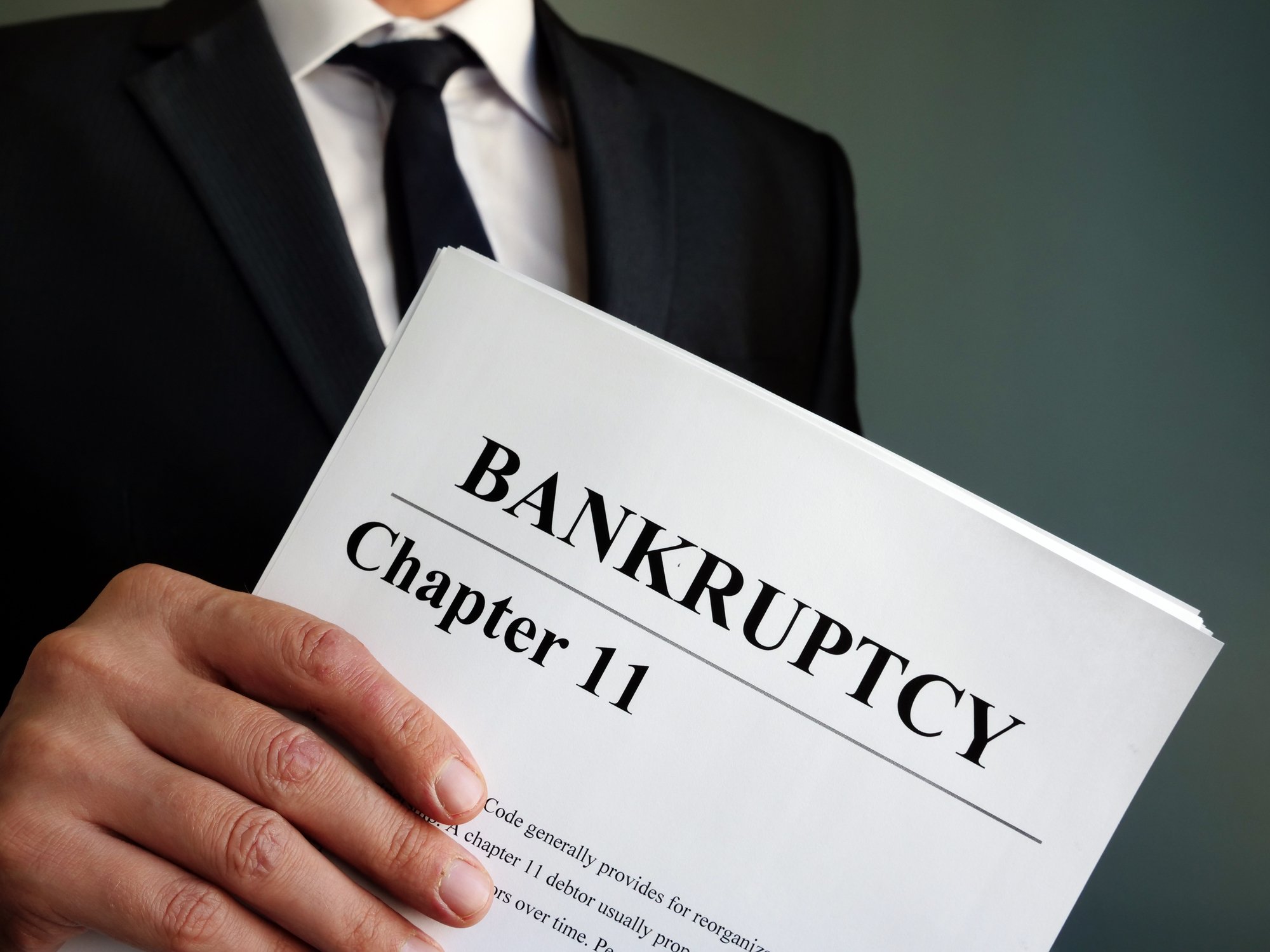Turmoil in the oil and gas markets has already claimed some major victims in 2020. Bakken shale producer Whiting Petroleum, drilling rig operator Diamond Offshore, and Colorado fracker Extraction Oil & Gas have already filed for Chapter 11 bankruptcy. Coal miner Foresight Energy has, too, as the country continues its shift toward cleaner energy sources.
And the year's not even half over yet!
It's likely that we'll see more energy bankruptcies before 2020 is done. Here are the top five most likely companies to declare bankruptcy before we ring in 2021.

Image source: Getty Images.
5. Borr Drilling
Prime candidates for bankruptcy have a lot of debt on their books and no obvious way to pay it, plus operational issues that make creditors unwilling to issue new debt to the company to pay off the old debt. Offshore rig operator Borr Drilling (BORR +3.55%) fits that profile perfectly.
Borr has $1.8 billion in debt on its books and just $13.2 million in cash. Due to the volatility in the oil and gas sector, its rigs aren't in high demand. On May 20, Borr's management announced it might need to sell off "certain modern assets" and renegotiate terms of various agreements with creditors, including shipyards where it keeps its idle rigs (of which it has 14, more than half its fleet).
While the company has "received certain waivers from its lenders, including ... interest payment deferrals," those won't last forever. When its creditors run out of patience, Borr could find itself filing for bankruptcy.
4. Denbury Resources
A company's management team usually tries to put as positive a spin as possible on its company's prospects, even when things seem to be falling apart. For Gulf Coast oil and gas producer Denbury Resources (DNR +0.00%), though, things got so bad in May that even management had to come clean in its SEC 10-Q filing about the bankruptcy risks:
[Current] conditions have also increased the difficulty in repaying, refinancing or restructuring our long-term debt, which is necessary in order to maintain our continuing financial viability... . Oil prices remaining at current levels will significantly reduce our cash flow and liquidity to a degree that threatens our continued financial viability. ... We have engaged advisors to assist us in, among other things, analyzing various alternatives to address our liquidity and capital structure.
When a company brings in outside "advisors" to look at "alternatives," bankruptcy often follows. And with $2.2 billion in debt and just $6.9 million in cash on its balance sheet, Denbury just isn't in a good position to weather the crisis.
Much of Denbury's debt matures in 2021, so it might be able to keep the wolf from the door until the end of the year, but beyond that, its prospects look grim.
3. Callon Petroleum
Callon Petroleum (CPE +0.00%) took on a lot of debt at precisely the wrong time. It purchased fellow Texas shale producer Carrizo Oil & Gas at the end of 2019, pushing its debt load up to $3.3 billion. Its current cash position, on the other hand, is just $14.8 million.
The company has tried to restructure that debt on more favorable terms, even hiring debt restructuring advisors, which is always a red flag. However, they don't seem to have had much luck: The company rescinded its exchange offer on May 26. When even the pros are having trouble getting a company out of its financial mess, it's at high risk for bankruptcy.
2. California Resources
For a lot of the companies on this list, we know things are bad. For driller California Resources (CRC +0.00%), the problem is that we have no idea exactly how bad things are.
The company punted on issuing its Q1 2020 quarterly SEC filing until June, but June's more than half over and there's still no sign of it. In fact, California Resources hasn't put out a single press release or investor presentation since April 8.
The only updates we have are through California Resources' SEC filings, where things look grim. The company, which had $5 billion in debt and just $17 million in cash on its balance sheet at the end of 2019, has entered into a series of forbearance agreements with its creditors, pushing a May 29 payment back to June 30. On May 19, it notified the SEC of changes to its variable compensation packages (a fancy term for performance-based bonuses), a move that often precedes a bankruptcy filing. Half of the payout will now be earned on (wait for it...) June 30.
It wouldn't be surprising to see California Resources declaring bankruptcy on July 1.
1. Chesapeake Energy
By the time you read this, the once-mighty Chesapeake Energy (CHK +0.00%) may have filed for bankruptcy already. Even if it hasn't, the writing's on the wall for the former natural gas juggernaut, whose shares have lost more than 99% of their value over the last 10 years.
Over the past month and a half, there have been a lot of red flags that a Chesapeake bankruptcy was imminent. Like California Resources, Chesapeake has filed its intention with the SEC to prepay $25 million in variable compensation to its top executives and vice presidents. In another filing, management issued a similar warning to Denbury, stating that "there is substantial doubt about the Company's ability to continue as a going concern."
If that wasn't worrisome enough, recent news reports have suggested that a bankruptcy filing is imminent. True, you shouldn't always believe those kinds of rumors, but in this case, they're backed up by a lot of hard evidence that Chesapeake just isn't long for this world.
And many, many more
Just because these are the five energy companies most likely to declare bankruptcy by the end of 2020 doesn't mean they're the only ones. In fact, plenty of oil companies have high debt levels and have been hit hard by continuing volatility in the energy sector.
Investors should do their homework before buying an energy company with a surprisingly cheap share price right now -- it could be about to go under.







